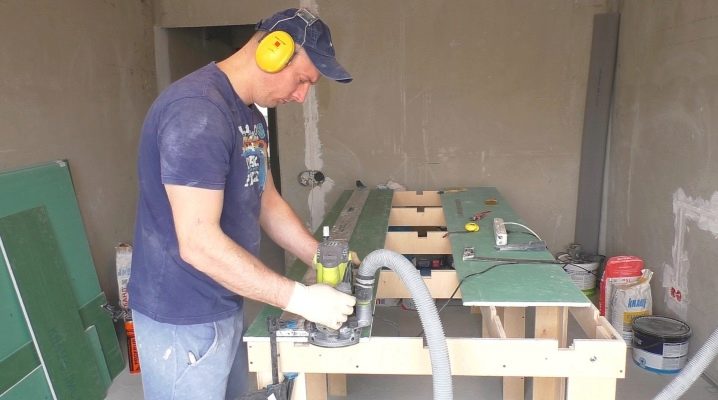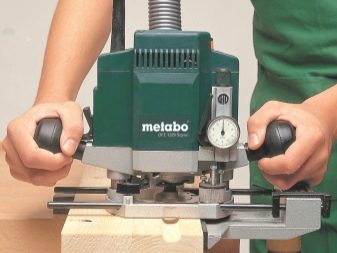Drywall milling: process features

Milling drywall is one of the methods of changing the texture of the sheet in order to give it different shapes. Such processing allows you to create various curly designs without resorting to the use of frames. Thanks to milling, the gypsum plasterboard can change shape, being bent at various angles, while there are practically no restrictions on the size and shape of the created figure. It is possible to apply various relief patterns on the surface of the sheet, in addition, the technique is easy to learn and economical both in terms of resources and time.


Peculiarities
The pluses of plasterboard milling include a number of features:
- Saving time. The construction of boxes and other shapes using milling reduces the time spent several times in comparison with the wireframe method.
- Simplicity. This method is distinguished by the simplicity of making figures, and strict adherence to the rules leads to an almost complete absence of marriage.
- Flexibility. In addition to other positive qualities, this method allows you to give drywall almost any shape, thereby expanding the range of design solutions. Precision and precision are the only requirements when creating complex shapes.

- Saving materials. Corner joints, which presumably will not be subject to serious pressure, need not be reinforced with metal corners. The default design has a sufficient margin of safety to last a long time without losing its shape.
- Reducing the scope of work. Since during milling, the corner of the room remains covered with a gypsum board sheet, it is possible not to trim it with a corner under the putty in order to cover the open end. In this way, a significant amount of building materials is saved.

Types of milling machines
There are two main types of milling machines used for milling gypsum board - disk and shaped.
Disc is used for cutting drywall sheets, mainly long sizes.
This method is different:
- high processing speed;
- a neat cutting line without chipping and chipping;
- limited work in straight lines.


A shaped milling machine is used for the main volume of work, the distinctive features of its use include:
- the ability to cut complex intricate shapes;
- the ability to drill holes of various depths and shapes, for example, oval or round;
- ease of applying a relief pattern to the surface;
- relatively low linear cutting speed, the chance of damage to the sheet is also higher.


Types of cutters
There are different types of cutters, each with a specific shape and designed to perform specific tasks.
Among the many, the following can be distinguished:
- fillet-groove V-shaped cutter - used to create right angles, this is the most common type when working with drywall sheets, since most of the collected objects are rectangular boxes;
- a straight cut cutter is used to cut holes perpendicular (at an angle of 90 °) to the plane of the sheet;
- a cutter for T-shaped grooves is similar to a straight-cut one, however, the holes obtained when using it can be of a significantly larger diameter;
- The U-groove cutter features drilled holes with a rounded bottom;
- a bevelling cutter is used to create a chamfer at the edges of sheets.


Recommendations for the selection of cutters
When choosing a cutter, first of all, you should pay attention to the manufacturer. A high-quality European-made product is an order of magnitude higher than its Chinese counterparts, which is offset by a higher quality of products. Nevertheless, there are samples of Chinese manufacturing of pretty good quality, when choosing them, you should ask the advice of knowledgeable people or look for reviews on the Internet.
When choosing a milling cutter, first of all check the shank diameter to match the available tools.

When buying cutters for the first time, you should not spend money on an expensive option with a wide range of applications. A set of several basic cutters at a reasonable price at the start will allow you to try the tool without fear of ruining it.
Further, the set can be supplemented with the necessary types of cutters based on experience and working needs.
The use of any cutting tool requires extreme care. First of all, you should read the instructions, even if you have already used a similar tool before. Each model has its own differences and its own security technology.


Preparation of the tool and workplace
Before proceeding with cutting sheets, it is worth preparing everything you need:
- Any milling machine with a power of 1 kW to 1.5 kW is suitable for cutting drywall. It will be difficult to work with a more powerful machine, and the chance of spoiling the material will increase.
- If the milling machine does not have a dust collection device, you need to attach it yourself, and connect a vacuum cleaner to it. Failure to do so will create a cloud of dust when cutting, impairing visibility and complicating cutting and breathing.
- For comfortable and high-quality work, protective equipment is required. These are at least protective goggles, but it is also advisable to wear a simple petal respirator


The workplace should be organized as follows:
- you need a smooth, flat surface, for example, a table;
- an emphasis is installed on one of the edges of the table, which can be made from several boards - fixing the material will ensure dimensional accuracy;
- a suitable cutter is selected - the most common type is a V-shaped one, which allows you to get an even edge of the correct shape.

Phased drywall cutting
To obtain a high-quality result, it is worth adhering to a certain order of actions. After all the preparatory work, you can start cutting directly.


There are various techniques for cutting drywall sheets, which, in essence, are as follows:
- Material markup. First you need to draw on the workpiece the outlines of all the parts that will be cut. For these purposes, a pencil and a ruler will come in handy. Sometimes, at the first markup, it seems that there will not be enough material, in which case it is worthwhile to figure out the cutting option again - perhaps it will be possible to reduce costs and put everything on the existing sheet. However, you should not place the parts too close to each other when marking, since drywall crumbles easily, and an accidental chip can spoil what was conceived.
- Pre-processing of workpieces. Before cutting to exact dimensions and embossing, whole sheets can be divided into preliminary blanks with rough dimensions. You can cut the sheets with a knife or other tool.
- Preparation for cutting. The workpiece is located in the clamps or abuts against the manufactured clamp. Protective equipment is put on. The equipment is connected to the network.


- Start of processing. With the motor turned off, the machine is applied to the drywall sheet so that the rounded part touches the fixing stop. When the cutter is turned on, a uniform movement of the machine begins from itself to the edge opposite from the retainer. This will ensure the resulting seam is even and forms the desired angle when bent.
- Double-sided processing.In cases where it is supposed to process the sheet from two sides, and grooves have already been applied on one of them, it is necessary to turn the gypsum board very carefully, since its strength in the processing areas is significantly reduced and breaking off is possible.
- After all the manipulations with the machine, the cut workpiece is folded at the seams. For fixing, various substances can be used, for example, polyurethane foam, some of which is blown into the treated furrow. In a tightly folded position, the part should be fixed for a few minutes until the foam hardens, after which its excess is removed.



Observing the technical rules for performing the process, in just a couple of tens of minutes, using a milling machine, you can give the necessary shape to the gypsum board without constructing a frame. This approach, first of all, saves time and money, in addition, the corners and transitions of such an object are of high quality and reliability.

Create a right angle
Rectangular boxes, for example, for lighting equipment are one of the most common plasterboard objects.
The most convenient method for creating them is using a V-cutter.
For such work, 2 features are important:
- when cutting drywall, the lower side should remain intact - the corner will hold on it;
- the cutter used for cutting the sheet must go deep into the gypsum board to a depth equal to the thickness of the sheet minus 2 millimeters - this way the safety of the back side will be ensured.

A wood cutter is practically no different from a gypsum board cutter. If we mill ourselves at home, then any attachment will do.
You can see a master class on milling drywall in the following video.













The comment was sent successfully.